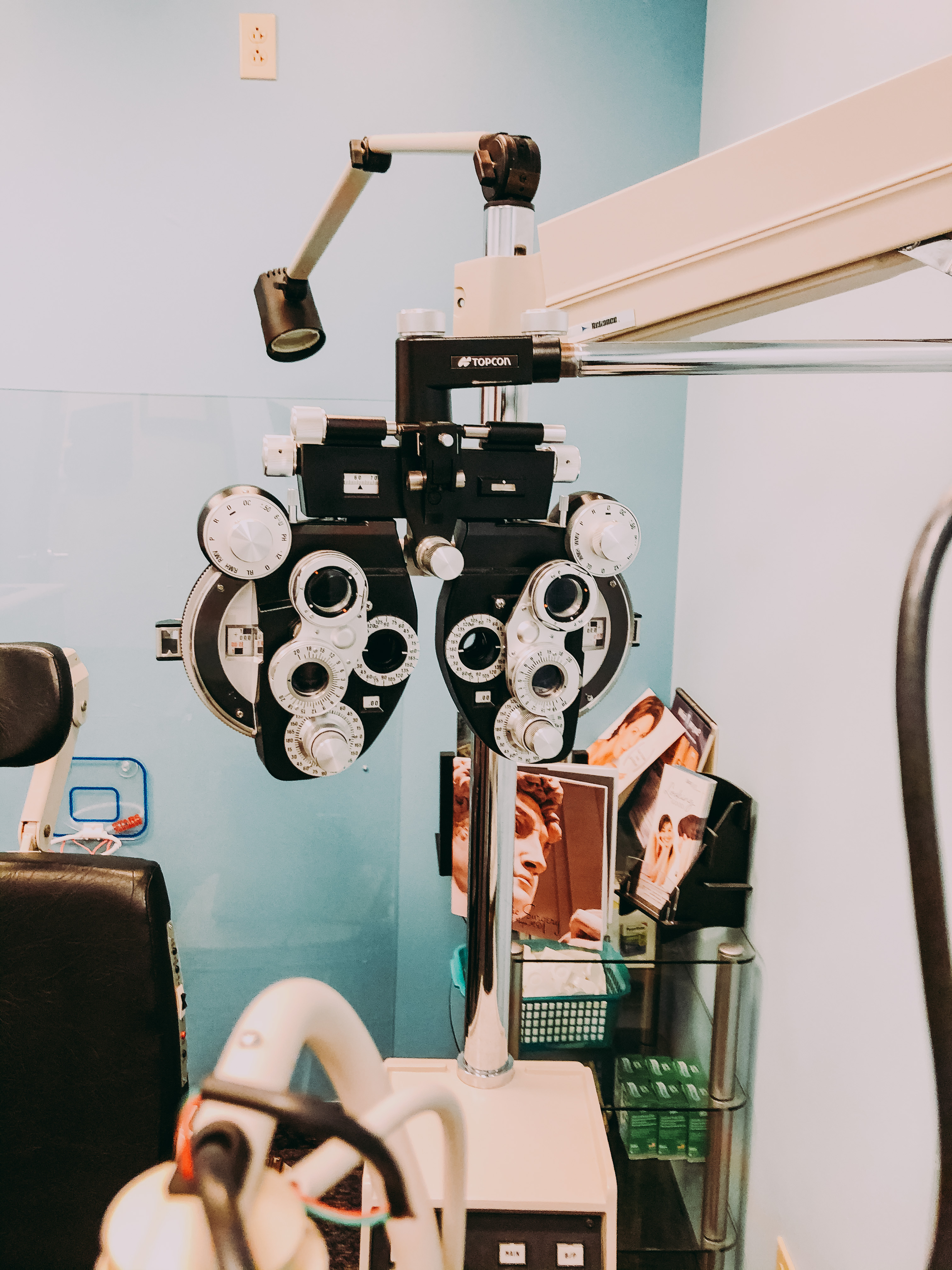
Pursing a career in medicine is an incredible journey full of many difficult decisions. One of the biggest, most daunting questions to answer is: what specialty do you want to pursue? While all physicians go through the same (or nearly the same) 4 years of training in medical school, afterward you have to complete residency training in the specialty that will be your career, most likely, for the rest of your life. There are so many different paths you can take, specialties and sub-specialties you can choose from, some of which you barely learn about in medical school. Thus, my new “Specialty Spotlight” series was created! In each blog post, I want to share details about a particular specialty and the various paths you can take within the specialty. First up: a spotlight on ophthalmology!
_______________
Let’s start with the basics:
What is ophthalmology?
Beyond being extremely difficult to spell, ophthalmology is the study of eye disorders and includes everything from providing a prescription for glasses to performing surgery. A general ophthalmologist will treat diseases such as cataracts and glaucoma.
How long is residency?
General ophthalmology is 4 years. One year of an internship, where you learn about the entire body (similar to an internal medicine residency), followed by 3 years of just ophthalmology training. At the end of training you are referred to as a “general” ophthalmologist and have the option of sub-specializing by completing a fellowship.
_______________
Now let’s dive a little deeper:
How do I become an ophthalmologist?
The exact path may look different for each person but here’s the general gist:
- 4 years of college as a premedical student
- 4 years of medical school
- 4 years of residency
- 1-2 years of fellowship
- A lifetime of trying to help others see better!
In general, ophthalmology is considered a competitive specialty and there are a few key recommendations medical students should do to be competitive for residency applications:
- Research in ophthalmology.
- Receiving honors in your internal medicine, surgery, and pediatric rotations.
- Becoming a part of the AOA honors society.
- Receiving letters of recommendations from ophthalmologists.
- Previously, a competitive Step 1 score was extremely important, however as the exam will be Pass/Fail starting 2022, a competitive Step 2 score is thought to be important as well (TBD I suppose)
While completing these won’t guarantee a match, they are a good starting point! If you are extremely interested in the field I recommend speaking with your department chair, dean, mentor or advisor to learn more!
What sub-specialties are available?
If you want to sub-specialize within ophthalmology, you have to complete a fellowship. Fellowships are typically 1-2 years and give you more experience treating a specific subset of ophthalmologic diseases and surgeries. Almost all fellowships can be applied to physicians interested in research, academics, and private practices. Also note, the opportunity exists to perform some of these procedures without a fellowship, however, a fellowship provides more extensive experience and makes you more of an expert on specific procedures (since you essentially practice the same handful of procedures for 1-2 years straight).
*All fellowships below represent the majority of the opportunities available from several training hospitals. Some fellowships differ slightly depending on where you train, but this gives a good general overview.*
- Cornea, External Disease, & Refractive Surgery Fellowship
- Length: 1-year
- Main features: Learning to treat patients with diseases of the anterior segment and performing refractive surgery (for example LASIK and SMILE)
- Glaucoma Fellowship
- Length: 1-year
- Main features: Become an expert in treating glaucoma through laser procedures, surgery, and extensive mentorship on the most up to date treatment
- Medical Retina/Uveitis Fellowship
- Length: 1-year
- Main features: Become an expert in managing retinal diseases including retinal detachment and diabetic retinopathy. It is similar to vitreoretinal surgery but without the surgical component.
- Oculoplastic Surgery Fellowship
- Length: 2-years
- Main features: Focuses on the reconstruction of the eyelid and periorbital area.
- Ophthalmic Oncology Fellowship
- Length: 1-year
- Main features: Learning to manage ocular tumors including tumors of the eyelid, conjunctiva, cornea, retina, and more. You also gain experience with pediatrics through the management of retinoblastomas.
- Pediatric Ophthalmology, Adult Strabismus, & Genetics Fellowship
- Length: 1-year
- Main features: Not all programs combine all three areas, but, in general, you treat Retinopathy of Prematurity, pediatric glaucoma, pediatric neuro-ophthalmology, and more.
- Uveitis and Ocular Inflammatory Disease Fellowship
- Length: 1-year
- Main features: Becoming an expert in uveitis, its management, and the most up to date treatments available.
- Vitreoretinal Surgery Fellowship
- Length: 2-years
- Main features: Perform surgeries and procedures to repair retinal damage including retinal detachment, large macular degeneration, diabetic retinopathy, etc.
- Ophthalmology Pathology
- Length: 1-year
- Main features: Learn to interpret tissue samples of the eye and adnexa for diagnosis.
- Neuro-ophthalmology Fellowship
- Length: 1-year
- Main features: Learn how to treat and manage damage to the optic nerve along with other neuro-ophthalmologic diseases.
Why do a fellowship?
Fellowships are by no means a requirement as a physician, however, they make you an expert in a particular procedure or disease management. For example, as a patient, would you rather see a doctor who has performed 2,000 ocular injections last year, or 200? It is common to complete a fellowship if you want to join a private practice of specialists or want to practice in a larger city. Often rural clinicians see a wide variety of diseases without sub-specializing since there are typically fewer physicians and fewer cases of rare/complicated diseases in rural locations so the need is not always present.
However, you can also complete a fellowship and not only see those particular patients. For example I’ve met an ophthalmologist who completed a pediatric fellowship but see’s patients of all ages (however, he’s the only one at his practice who see’s children), so there is quite a bit of flexibility within the field depending on where you practice.
_______________
Other healthcare positions that often work with ophthalmologists:
If the medical school route isn’t for you, but the eyes still interest you, there are a ton of different career options out there!
- Optometrist
- Degree: Doctor of Optometry
- Training: 3-4 years in undergrad, 4 years of OD school, optional 1 year of specialized training
- Main role: Provide primary care for the eyes, treating diseases such as glaucoma, can prescribe and fit eyeglasses, and provide low-vision aids and vision therapy. They are referred to as Dr. and can diagnose and treat ocular conditions but cannot perform medical or surgical intervention.
- Optician
- Degree: Variable by state, typically an associate’s degree or a certificate from a community college or technical school
- Training: typically 1-2 years at a technical school after high school
- Main role: They design, verify, and fit eyeglass lenses and frames, contact lenses using the prescription provided by an opthalmologist or optometrist.
- Ophthalmic photographer
- Degree: Variable depending on the path, many have a BS with a major in medical imaging/imaging sciences and become a Certified Ophthalmic Photographer (COP), others do an internship and have no official degree.
- Training: Variable, COP’s with a BS in medical imaging have 4-7 years of training total (a 4-year BS degree and 1-3 years of internships)
- Main role: Use specialized imagine equipment to photograph the eye, including ultrasounds, which doctors interpret to diagnose, monitor, and treat ophthalmic conditions.
_______________
Hopefully this post was able to share a little more insight into the field of ophthalmology! If you have any questions, don’t hesitate to reach out via Instagram or in the comments below.
Have a beautiful day!
